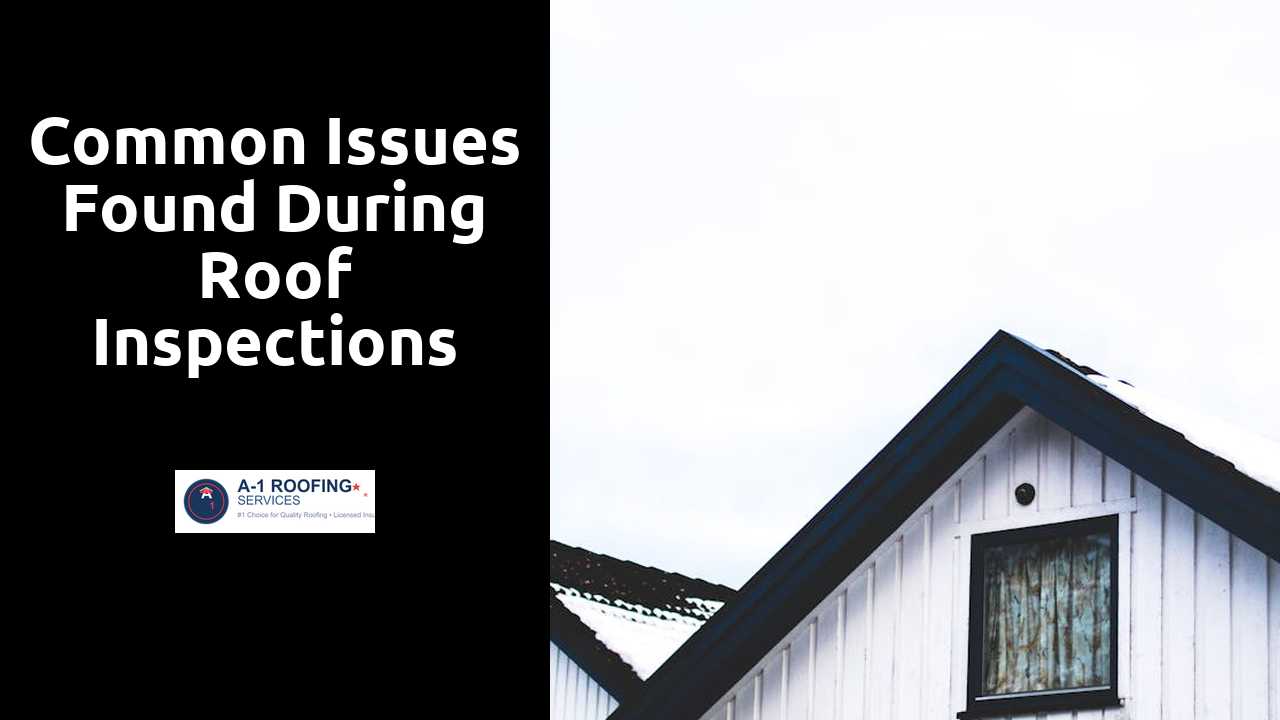
Common Issues Found During Roof Inspections
Table Of Contents
Flashing Deterioration
Flashing serves a critical function in protecting roofs from water infiltration, channeling moisture away from vulnerable areas such as chimneys, vent pipes, and joints. Over time, flashing can deteriorate due to exposure to harsh weather conditions, improper installation, or the use of substandard materials. As the flashing becomes compromised, it can allow water to seep beneath the roofing material, leading to leaks and further damage within the structure.
Regular inspections can help identify issues with flashing before they escalate. Look for signs of rust, gaps, or cracks, which may indicate that flashing is no longer effective. If ignored, these problems can result in significant repairs and costly water damage. Ensuring proper installation and maintenance of flashing is crucial for extending the life of the roof and preserving the integrity of the entire building.
Here is a great resource for anyone looking to expand on this topic.
Importance of Proper Flashing Installation
Proper flashing installation is critical in preventing water damage to a roof and adjacent structures. It acts as a barrier that redirects water away from vulnerable areas, such as joints and seams, where leaks are most likely to occur. High-quality flashing materials can withstand the elements, reducing the risk of deterioration that can lead to costly repairs and structural damage over time.
Without appropriate flashing, even a slight misalignment or damage can lead to significant water infiltration. This infiltration not only compromises the integrity of the roofing system but can also impact insulation and interior finishes. Ensuring that flashing is installed correctly helps maintain the overall health of the roof and prolongs its lifespan, ultimately providing better protection for the home.
Structural Damage
Homeowners should be alert to the signs of structural damage, which can pose serious risks to the integrity of the entire roofing system. Bows or dips in the roofline can indicate compromised trusses or rafters. Additionally, sagging areas often point to water damage, which can rot the supporting materials if not addressed promptly. Inspecting the attic for unusual movements or sounds can provide valuable insights into underlying issues.
Another common red flag is water stains on ceilings or walls, suggesting that leaks are actively occurring. These stains can manifest in various colors, signaling varying stages of water damage. Cracked or missing shingles might also be present, leading to further vulnerabilities against the elements. Detecting these problems early can save significant costs on repairs, as well as prevent potential safety hazards within the home.
Recognizing Signs of Roof Structural Issues
Spotting signs of roof structural issues can prevent more severe damage down the road. Homeowners should look for sagging areas, which may indicate a compromised support system. Cracked or warped roof decking is another red flag that requires immediate attention. These physical alterations often signal underlying problems that could lead to leaks and structural failures.
Water stains on interior ceilings or walls can also indicate potential structural concerns. Such stains typically result from moisture infiltrating through compromised roofing materials. Additionally, excessive granule loss from shingles can suggest that the roof is nearing the end of its lifespan. Timely identification of these signs helps maintain the integrity of the roof and protects the overall health of the home.
Moss and Algae Growth
Organic growth on roofs can create serious long-term issues. Moss and algae thrive in damp, shaded areas, often found on roofs with insufficient sun exposure. These organisms retain moisture against roofing materials, leading to accelerated deterioration. Over time, they can break down shingles and compromise the roof's protective barriers. This not only affects the aesthetic appeal of a home but also poses risks to the underlying structure.
Regular maintenance is key to preventing the establishment of moss and algae. Homeowners should consider trimming overhanging branches to increase sun exposure and reduce moisture retention on the roof. Additionally, cleaning the roof with appropriate solutions can help eliminate existing growth. Addressing these issues promptly can contribute to a longer lifespan for the roofing system and help avoid costly repairs down the line.
Effects of Organic Growth on Roof Longevity
Organic growth, such as moss and algae, can pose significant risks to the longevity of a roof. These organisms hold moisture against the roof surface, which can lead to increased wear and tear. When roofs remain wet for prolonged periods, the underlying materials may degrade faster, compromising their effectiveness and leading to potential leaks.
In addition to structural damage, organic growth can also create an unattractive appearance for homes. This can decrease curb appeal and potentially lower property values. Effective maintenance is crucial to mitigating these issues. Regular cleaning and the application of preventive treatments can help protect roofs from the damaging effects of moss, algae, and other organic materials.
Related Links
Essential Checklist for Thorough Roof InspectionsRecognizing Warning Signs That Require a Roof Inspection